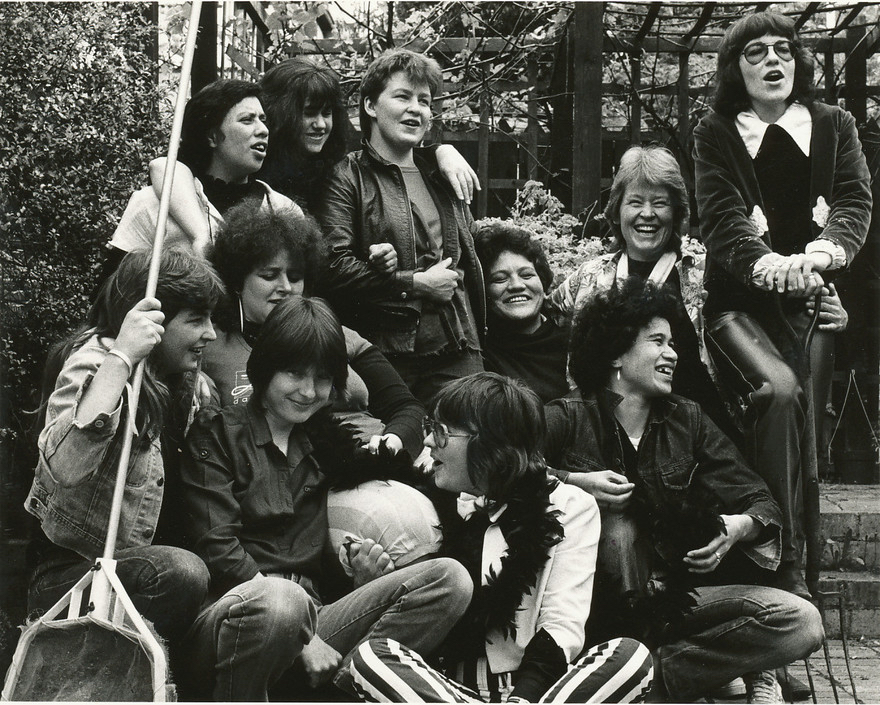Graham Reid | | 2 min read
Waiting on Information, by Jesse Hawk Oakenstar

Looking back at the women’s movement in the socially volatile 1970s and 80s, they were comparatively simpler times. Even though feminism was complex – a more militant, separatist faction would emerge – at its core was equality. Equal rights, equal pay, equal opportunity.
As an insight into the culture of the period, music was a male-dominated and male-centric microcosm. New Zealand music was not the industry we know today; women artists struggled for a place.
Certainly, there had been visible, successful, independent women such as Beaver (Bev Morrison) in BLERTA, Shona Laing, Sharon O’Neill, and Jenny Morris. But the fact we can name them is indicative of how few got through or were prepared to dance in the minefield of male approval and expectation, in the boardroom or the bar. The more inclusive punk movement in the late 70s changed the ground.
The nexus of independent women artists, feminism and the post-punk DIY ethos came in 1982 with the recording and release of the album Out of the Corners. It appeared on the newly minted Web Records, with the drawing of a spider web on the label and back cover, “because women weave the world”.
It was the first New Zealand record written, performed, and produced by women and it came out of independent Web Women’s Collective. Out of the Corners included songs by The Topp Twins, Mahinaarangi Tocker (credited as Mahina Tocker), Di Cadwallader, Val Murphy and others.
 It’s a measure of how important Out of the Corners was that it sold 500 copies before it was released. The album had grown out of women’s concerts and singers on protest marches or busking, which morphed into the Broadsheet Travelling Roadshow, Broadsheet being the feminist magazine of the day.
It’s a measure of how important Out of the Corners was that it sold 500 copies before it was released. The album had grown out of women’s concerts and singers on protest marches or busking, which morphed into the Broadsheet Travelling Roadshow, Broadsheet being the feminist magazine of the day.
The album brought together new and established artists who recorded between midnight and dawn at Auckland’s Harlequin Studios to take advantage of the low rate.
The cover photos – by Biddy Leyland and Gil Hanly, with graphics by singer-songwriter Tracy Huirama, on the album with ‘Sister Wars’ – were of the weary musicians listening to playbacks. The front cover takes a sly poke at the famous dog and logo of the HMV (His Master’s Voice) label.
It’s emblematic of the era in mainstream New Zealand that the New Zealand Herald’s article about the album appeared on its “Mainly Women” page. To be fair to the Herald, it didn’t have entertainment or album review pages at the time, so . . .
.
To read the complete article go to AudioCulture here.
.
Audioculture is the self-described Noisy Library of New Zealand Music and is an ever-expanding archive of stories, scenes, artists, clips and music. Elsewhere is proud to have some small association with it. Check it out here.





post a comment